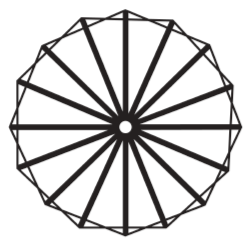Constructive program (CP) is a term coined by Gandhi. It describes nonviolent action taken within a community to build structures, systems, processes or resources that are positive alternatives to oppression. It can be seen as self-improvement of both community and individual. CP often works along side obstructive program, or Civil Disobedience, which usually involves direct confrontation to, or non-co-operation with, oppression. Constructive program is doing what one can to imaginatively and positively create justice within one’s own community.
Confrontations — whether violent or nonviolent — can capture attention, intrigue the media, and catalyze fledgling movements. However, by themselves even poignant instances of nonviolent resistance cannot build or sustain movements. Gandhi understood that CP, at its core a positive principle, would draw many people to a program of principled nonviolence. Moreover, there is a special power and directness in improving oneself and one’s community rather than, or alongside, trying to change an oppressive system (see swadeshi).
Gandhi defined Constructive Program quite early in his career and coined the term to denote the myriad of activities that he felt were prerequisite to carrying out the more overt and confrontational modes of nonviolent action. For example, he established four ashrams in the course of his long career where satyagrahis, nonviolent actors, could live a nonviolent, creative life that was largely self-sufficient and sustainable. As Constructive Program took on more and more importance over the course of the Indian freedom struggle, the charkha or spinning wheel became its symbol. By using the spinning wheel to create home-spun cloth, each Indian could participate in the struggle to build a sustainable economy separate from the British textile industry. Spinning enabled every Indian to engage in the ‘bread labour’ of fulfilling a basic need, gave employment to millions of idled workers, and allowed all Indians to participate directly in freeing India from England’s economic domination. The spinning wheel became the ‘sun’ in the ‘solar system’ of many other projects.
Many modern nonviolent movements pay little or no attention to Constructive Program. Instead they focus all of their energy on non-cooperation and civil disobedience. Activists are tempted to reason that they can build a new society after the present regime is gone. Gandhi argued that the reality was reversed, and that the chances for permanent change were less without CP. Recent events seem to bare this out. While nonviolent insurrectionary movements in the second half of the 20th century have successfully liberated people from repressive regimes in South Africa, the Philippines, Poland, the Czech Republic, Serbia, and many other places, in almost all cases the same problems of poverty and other forms of structural violence have returned to undermine the gains of the nonviolent program. This is not because nonviolence doesn’t work but because nonviolence without Constructive Program is incomplete.
The first Palestinian Intifada (1987-1991) is a notable example of a powerful application of Constructive Program. The Palestinians, along with protesting the policies of the Israeli government, planted community gardens, purchased only their own products, taught in neighborhood schools, established women’s groups and other social networks, and focused on making themselves self-reliant and self-sufficient even during intense repression and without a recognized national government. These activities provided tangible sustenance for the people, as well as cohesiveness and psychological well-being. Although the Intifada did not “work,” to gain the Palestinian’s their freedom, their CP worked by building a more resilient community (see “Work” vs. Work).
Resources:
- Constructive Programme, Its Meaning and Place, [Mohandas Gandhi, Ahmedabad: Navajivan, 1941]
- Constructive Program, Metta Resources
- “From Principles to Practice” – Constructive Programme








